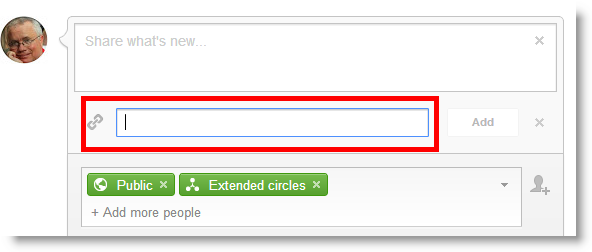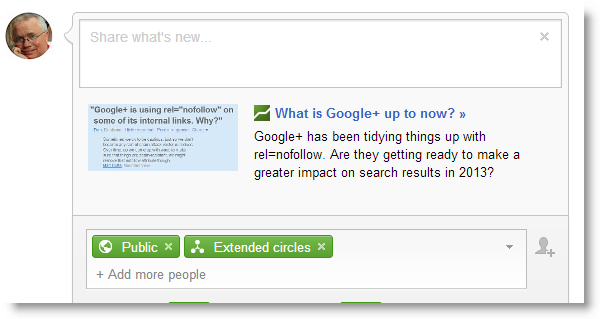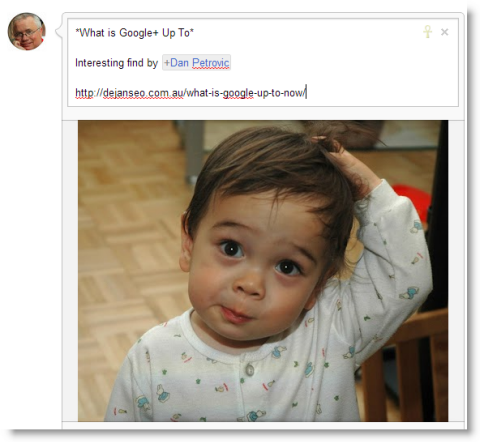According to Dan Petrovic of Dejan SEO, as of 5 January 2012 Google stopped following (for link juice purposes) links placed in posts on Google+.
The primary link is still followed. This is the first link you put into a post on Google+ if you allow G+ to turn it into a rich snippet.

![]()

Any other link inserted into a post or its comments will be marked as “no-follow” by Google.
Followed vs. Not Followed Links
(Skip this section if you already understand this concept.) So what’s the big deal? When Google “follows” a link (in this usage of the term), it potentially passes along some of the PageRank (“link juice”) from the site with the linked to the linked-to site. This is why links are such a valuable currency in SEO.
Google provided webmasters with the option to mark links with a rel=”nofollow” tag if they did not want Google to pass on link juice through the link. And Google itself will nofollow links it thinks are not valuable or could be spammy.
Why Is Google+ NoFollowing Google+ Links?
It appears this is an anti-spam measure. With any and all links being followed as they were, there was great temptation to fill a post with links just to get the link juice. And the temptation was even higher for spam commenters. This new policy removes the temptation, while still including the link juice “reward” for a genuinely shared link (i.e., a link which is the focus of a post).
Effect on Your Google Plus Posting Strategy
In the past, many of us recommended that when sharing a link in Google+, you don’t put the link in the link share box, but rather first share an attractive and relevant image, then drop the link in the main post. Because Google+ displays images so attractively, such posts tend to catch the eye and get higher engagement than “plain old” link share posts (as displayed in the second image in this post).
Before this change, here’s how I might have shared Dan’s post in Google+:

See how the image arrests your attention?
But under this change, the link I inserted to Dan’s post will not be followed, and so has no SEO benefit for him. If I cared about that, I’d have to share his post as in the second image above. The rich snippet auto-created by Google+ is better than nothing, but my cute baby scratching his head beats it hands down.
On the other hand…
If I care more about engagement on Google+ and (potentially) driving more traffic to the linked site, then the image post method may still be the way to go.
Have Your Cake and Eat It Too?
Google+ user Michael George suggested a possible (if somewhat labor intensive) workaround. Do your initial post as an image share to get as much engagement and traffic-driving as possible. Then revisit it after a month or so, once it has died down, and edit the post, removing the image and dropping in the original link to turn it into a link-share post. Maybe add a little more relevant content to the post, and try to get some new comments to it, to entice Google to re-crawl it. A test by him showed that such an edit did result in a dofollow link. Of course, this means keeping track of posts that would be worth doing this for.
How will this change affect your posting strategy on Google+? Do you think this was a wise decision on Google’s part?
![]() Like this post? Please upvote it at Inbound.org!
Like this post? Please upvote it at Inbound.org!
Related articles
 Google Changes Rules On Nofollow – Forgets To Send Memo
Google Changes Rules On Nofollow – Forgets To Send Memo Must-do for authors: Link your Google+ profile to the content you create
Must-do for authors: Link your Google+ profile to the content you create










